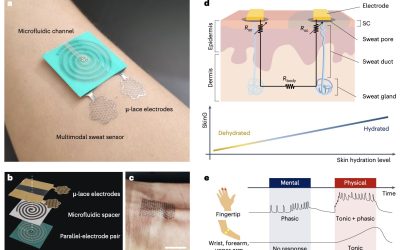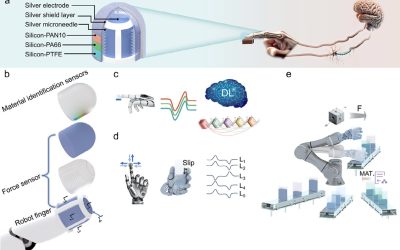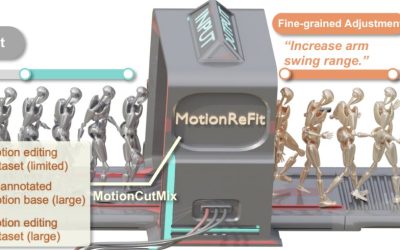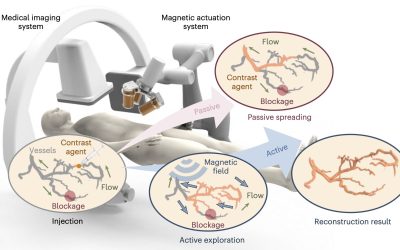Over the past few decades, solar cells have become increasingly widespread, with a growing number of individuals and businesses worldwide now relying on solar energy to power their homes or operations. Energy engineers worldwide have thus been trying to identify...
TECHXPLORE
Using the skin’s electrical conductance to track sweat loss during both physical and mental activities
Over the past decades, electronics engineers have developed a wide range of wearable devices that can be used to track some physiological processes and collect health or fitness-related data. These devices rely on miniature sensors that can pick up different signals,...
Ink engineering approach boosts efficiency and cuts cost of quantum dot-based photovoltaics
Colloidal quantum dots (CQDs) are tiny semiconductor particles that are just a few nanometers in size, which are synthesized in a liquid solution (i.e., colloid). These single-crystal particles, created by breaking down bulk materials via chemical and physical...
Finger-shaped tactile sensor advances robotic touch with multi-directional force detection and material identification
The development of increasingly sophisticated sensors can facilitate the advancement of various technologies, including robots, security systems, virtual reality (VR) equipment and sophisticated prosthetics. Multimodal tactile sensors, which can pick up different...
Mimosa seed bio-piezoelectric device functions as self-charging supercapacitor with high efficiency
Most energy generators currently employed within the electronics industry are based on inorganic piezoelectric materials that are not bio-compatible and contribute to the pollution of the environment on Earth. In recent years, some electronics researchers and chemical...
New model can generate audio and music tracks from diverse data inputs
In recent years, computer scientists have created various highly performing machine learning tools to generate texts, images, videos, songs and other content. Most of these computational models are designed to create content based on text-based instructions provided...
Dynamic model can generate realistic human motions and edit existing ones
When exploring their surroundings, communicating with others and expressing themselves, humans can perform a wide range of body motions. The ability to realistically replicate these motions, applying them to human and humanoid characters, could be highly valuable for...
Conversation catalysts: Study shows English-speaking robots can enhance parent-child dialogue
Over the past decades, researchers have developed a wide range of advanced social and assistance robots that could soon be introduced into households worldwide. Understanding how the introduction of these systems might impact the lives of users and their interactions...
Magnetic microrobot swarm enables 3D imaging of vascular networks
Angiography is a widely used medical imaging technique that allows medical researchers and doctors to capture the vascular network (i.e., blood vessels) using contrast agents, substances that enhance the visibility of specific structures inside the body when exposed...
New approach reliably integrates 2D semiconductors with dielectrics
Two-dimensional (2D) semiconductor materials could enable the development of smaller yet highly performing electronic components, thus contributing to the advancement of a variety of devices. While significant strides have been made in the synthesis of 2D...










